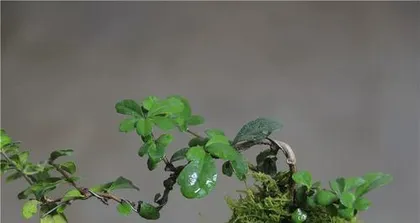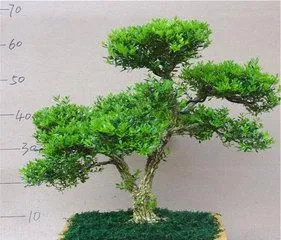As a bonsai plant, boxwood is increasingly loved by more and more people. However, many people do not understand its maintenance, nor do they know if it can be kept indoors. This article will explain in detail the methods and precautions for indoor care of boxwood.

Overview of Boxwood
Boxwood belongs to the genus *Buxus* of the Buxaceae family and is an evergreen tree or shrub. Its trunk is upright, the crown is round or oval, the branches are short and dense, and the leaves are leathery and glossy, green or dark green. It is also a common bonsai plant.
Is boxwood suitable for indoor cultivation?
Boxwood can be kept indoors, but attention needs to be paid to factors such as light, temperature, and humidity. During maintenance, adjustments should be made according to the actual situation to ensure the growth and development of the boxwood.

The effect of light on boxwood
Boxwood needs sufficient light but cannot be exposed to direct sunlight. If the light is too strong, it will cause the leaves to turn yellow or dry out, and even appear scorched. When cultivating indoors, use curtains or blinds with good light transmission to avoid direct sunlight.
The effect of temperature on boxwood
Boxwood prefers a warm climate, with a suitable growth temperature of around 20°C to 25°C. In winter, if the indoor temperature is too low, it is necessary to increase the room temperature appropriately to avoid affecting the normal growth of the boxwood.
The effect of water on boxwood
Boxwood needs to maintain a moist soil environment, but it cannot be overwatered. During maintenance, adjustments should be made according to its growth status and the season. Water more appropriately in summer and reduce the amount of watering in winter.

The effect of fertilizer on boxwood
Boxwood needs a moderate amount of fertilizer supplement to ensure its normal growth. During the growing season, apply fertilizer once a month; you can choose some organic fertilizers or compound fertilizers.
The effect of pruning on boxwood
Boxwood needs to be pruned frequently to maintain the shape and beauty of its crown. During the growing season, one major pruning and several minor prunings can be done each year.
Pest and Disease Control
Boxwood is susceptible to pests such as aphids and mites and requires timely control measures. Some biological or chemical pesticides can be used for spraying.
Propagation Methods for Boxwood
The propagation methods for boxwood include cuttings, grafting, and division. Among them, cutting is the most common method and can be carried out during the growing season.
Is boxwood suitable for beginners?
Boxwood is relatively easy to care for, but attention needs to be paid to factors such as light, temperature, and humidity. Beginners can try some easier-to-care-for plants first and consider choosing boxwood for maintenance after becoming familiar with it.
Precautions for Indoor Care of Boxwood
When caring for boxwood, it is necessary to pay attention to the reasonable combination of factors such as light, temperature, water, and fertilizer. At the same time, timely pruning, pest and disease control, etc., are necessary to ensure its healthy growth.
How to Choose Boxwood?
When choosing boxwood, select high-quality seedlings. The trunk should be straight and strong, and the roots should be healthy and complete. At the same time, pay attention to observing factors such as leaf color and shape to ensure good quality.
Aesthetic Value of Boxwood
As a bonsai plant, boxwood has not only ornamental value but also a unique aesthetic value. Its shape and posture can bring people endless imagination and feelings, making it a very artistic plant.
Cultural Significance of Boxwood
Boxwood holds an important position in Chinese culture and is known as "the green of the literati." It can be used as an embellishment in garden landscapes or as a favorite item for scholars and refined people.
As a bonsai plant, boxwood not only has ornamental value but also unique aesthetic and cultural significance. When keeping it indoors, it is necessary to pay attention to the reasonable combination of factors such as light, temperature, water, and fertilizer, and to prune and control pests and diseases in a timely manner to ensure its healthy growth.